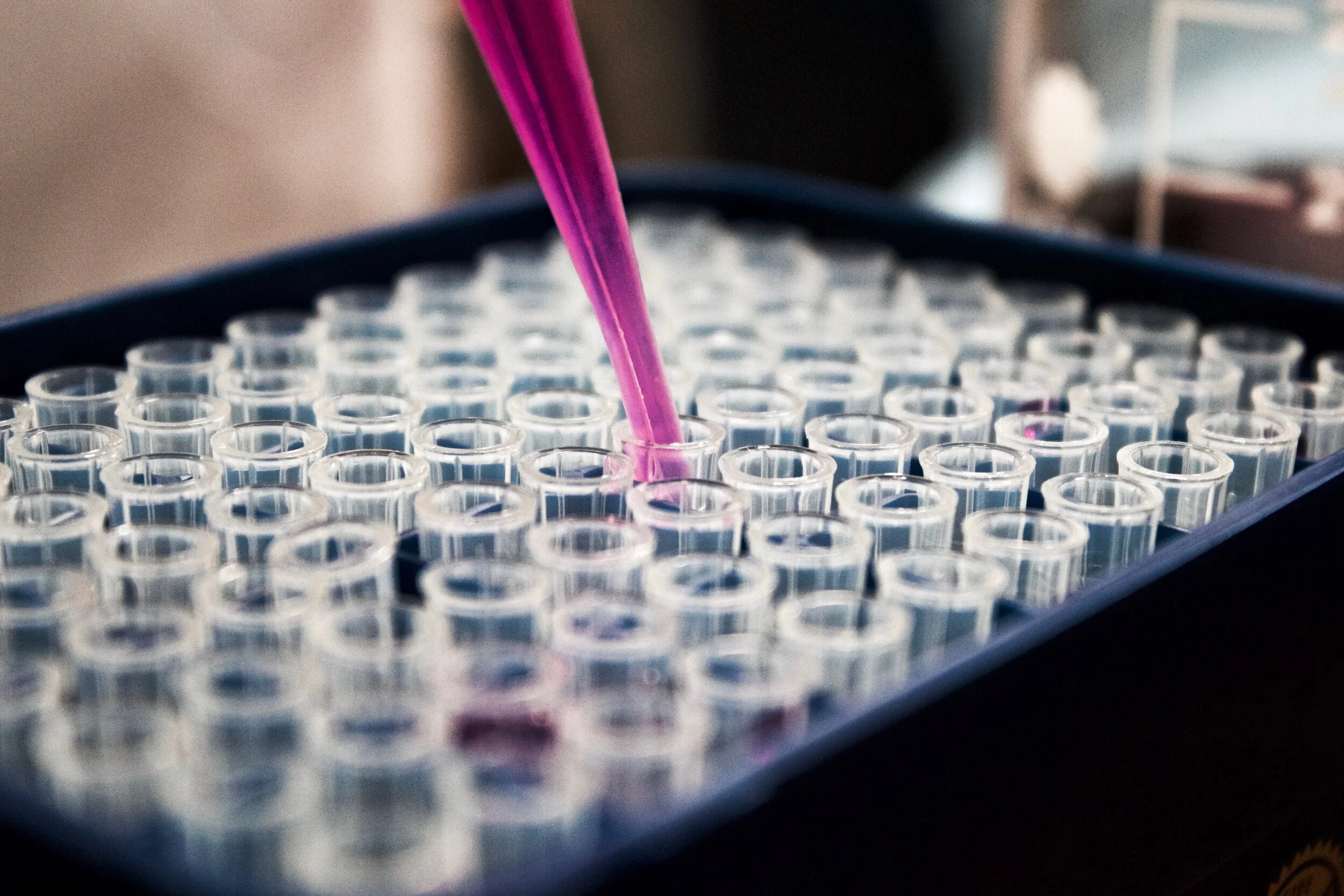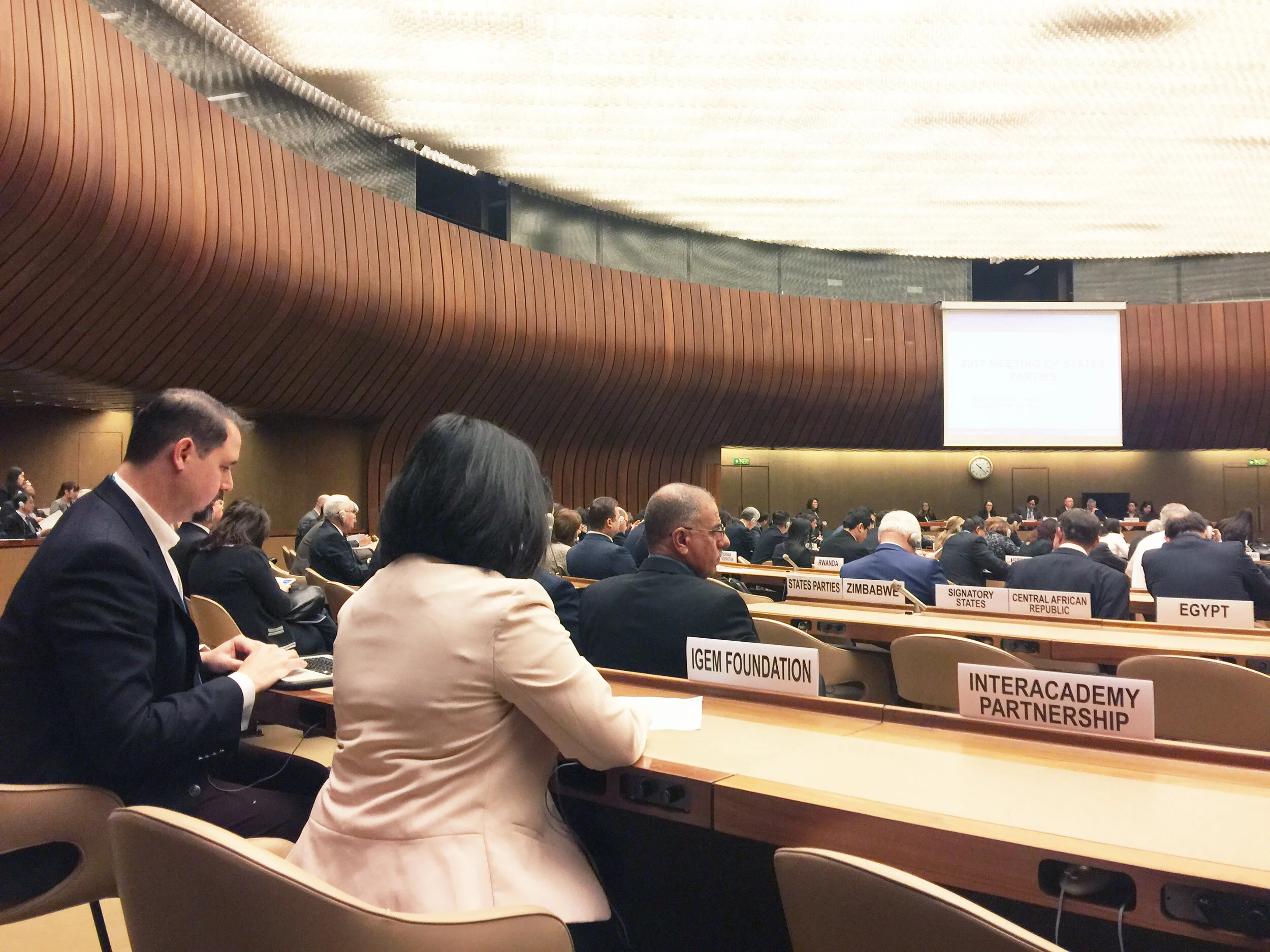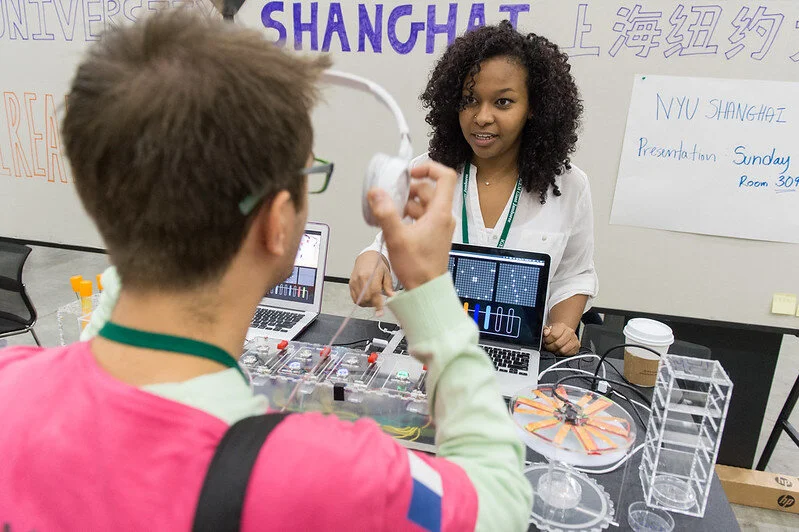Maximizing Benefits, Minimizing Risks
by Piers Millett, Pim Klaassen, and Sam Evans
on behalf of the iGEM Safety & Security and Human Practices committees
Piers Millett (iGEM Vice President of Safety & Security) and Pim Klaassen (iGEM Human Practices Committee) presented this topic at iGEM’s 2020 Opening Weekend Festival (YouTube)(Bilibili)
The iGEM competition should be a challenging, fun, and rewarding experience. But like all science and engineering, every iGEM project has some potential to cause harm. And so iGEM has a number of policies in place, as well as dedicated committees, to help teams do the best science and engineering possible – maximizing benefits for the world while at the same time minimizing any chance of harm.
iGEM Values, Rules, and Resources
It’s often said that iGEM isn't easy but it's worth it. In the iGEM competition we expect a high standard of conduct from everyone. We must all live up to our shared values – integrity, good sportsmanship, respect, honesty, celebration, cooperation, effort, excellence – that underpin our collective efforts to build the future in which we all want to live. These values should remain true wherever you are in your career and whatever you're doing with synthetic biology.
All teams must follow the competition's Rules of Conduct. These rules are built upon our community values to support fairness and recognize honesty, integrity, mutual respect, as well as engineering excellence. It’s important to honour iGEM’s values and follow the rules to reduce the risk of harm and avoid running into problems when working with people, such as carrying out interviews, or conducting surveys, working with animals (including vertebrates and social invertebrates), working with antimicrobial resistance (including the use of selection markers), using human samples or testing your project on people, and keeping your project in the lab.
Members of the RCC at the 2019 Giant Jamboree
The Responsible Conduct Committee (RCC) was established to deal with behaviour and practices that are inconsistent with iGEM’s values and rules of conduct. They are the point of contact for anyone who has concerns about any an iGEM participant, whether that be a member of a team, an entire team, a judge, an advisor, or a member of iGEM HQ. The RCC helps ensure the Giant Jamboree, the culminating event for the competition, is an exciting celebration of the commitment and accomplishment of all iGEMers.
We understand there are differences of opinion as to what is desirable and what is not desirable. We know that thinking about things like risk and benefit is inherently human and
that makes it complicated. To help teams think through these and other issues, iGEM also has a dedicated Human Practices Committee, Safety & Security Committee, and Diversity & Inclusivity Committee who have created numerous resources that are available on the iGEM 2020 competition website.
Human Practices
Since very early days, human practices has been integrated into the iGEM competition to help teams think about how their work affects the world and how the world affects their work. Indeed, human practices is a requirement for silver and gold medals and there are special awards to recognize excellence in human practices. Human practices helps teams integrate all the various values that are pertinent to their project and to become aware of the risks the project might carry and the potential for harm.
To succeed in human practices, teams must carefully consider a number of rather big questions throughout their project. It helps to figure out what values are at the heart of your work – what motivates you to work in synthetic biology in the first place? Once you’ve figured that out, you can think about what good your project will bring to the world – how might your project contribute to human well-being or environmental sustainability? And also think about what unwanted impact your project might have – how could your project further inequalities or vulnerabilities?
Not only must teams thoughtfully engage with these issues, but they must also report their work in human practices by demonstrating the “Three Rs” of Reflection, Responsibility and Responsiveness:
Reflection: Reflect on your goals and the values central to your project, throughout your project. This means that time and again you ask yourself if indeed your work contributes to the values that are central to your project.
What personal knowledge, ideals, or motives are the driving force behind your project?
What positive change do you seek to make in the world?
In what ways might your project benefit society?
How did you decide that synthetic biology is an appropriate means to reach your project’s goals?
Group of volunteers the at the 2019 Giant Jamboree
Responsibility: Align your process and products with iGEM’s values and display your awareness your powers and the limits to your powers. This means that you do what is within your powers to maximize benefits and to minimize harms.
How might your team’s solution to one problem lead to other problems (e.g. social/political/ecological)? Which communities may be left out or negatively impacted if your project succeeds? Could your project be misused?
How can your team minimize the impact of these concerns?
What gaps in the knowledge or skills of your team require attention?
What’s your plan to inform relevant authorities or stakeholders on potential risks related to your project, and to work with them?
How might current policies and regulations apply to your project? Are they sufficient, and if not, how might they be changed?
Responsiveness – Display a sensitivity to (novel) contextual knowledge and adjust your course in response to others’ needs or values. This means showing how the values, needs, perspectives, and knowledge of others, which you have actively sought out, has indeed impacted the course of your project.
What work, both outside and inside of iGEM, inspired your project?
Which communities may be most interested in or affected by your project? How can you responsibly engage them in your project?
How might you get feedback on the viability and desirability of your approach? How will you adapt your project based on this feedback?
How might your approach compare to alternative solutions to the same or similar problems (including approaches outside of biotechnology)?
In essence, human practices is about finding ways to incorporate knowledge, values, interests and needs that you won't necessarily find in the lab. This year the COVID-19 pandemic has posed some challenges to iGEM teams with regard to active engagement with others. You’ll find some helpful guidance on approaches to consider during the pandemic, as well as tips and techniques for conducting Human Practices work in the sessions from iGEM’s 2020 Opening Weekend Festival, including Doing Human Practices During A Global Pandemic (YouTube)(Bilibili), How to Find Insights from Social Science Research (YouTube)(Bilibili), Designing Scientifically Valid Surveys (YouTube)(Bilibili), iGEM Insights: Understanding iGEM Through Data (YouTube)(Bilibili), and iGEM and the Sustainable Development Goals (YouTube)(Bilibili).
You can learn even more by visiting the Human Practices Hub, where you’ll find an introductory video, some answers to frequently asked questions, links to exemplary projects from previous years, additional resources that can help guide your thinking, as well as the history of Human Practices in iGEM. And if you have any questions or thoughts on human practice, please get in touch with the Human Practices Committee at humanpractices@igem.org.
Members of the 2019 Lambert team at the Giant Jamboree
Safety & Security
iGEM’s Safety and Security program helps you to identify and manage risks from your projects. In many labs this is often done for you; there's a biosafety officer that thinks about this. But iGEM believes that a good synthetic biologist is also a safe and secure scientist or engineer. Our program is built around safe and secure project design, safe and secure lab work, safe and secure delivery, both in terms of physically moving things around and also in terms of sharing information.
iGEM believes that safety and security is everybody's responsibility. We expect both students and instructors to work on safety and security issues. Together you ensure that teams meet international, regional, national, and institutional rules and regulations. Teams are expected to provide safety and security information on their projects at different points in the competition lifecycle.
As in any normal year, we ask you to tell us about possible hazards from your project and how you're going to manage them – before you start working the lab – roughly when you've finished the planning stages and you're moving into the implementation. Then we ask you to outline what you're planning to do and what the safety and security procedures and practices are in place to make it okay. Then we ask you to tell us again similar sorts of information when you're moving from the experimental phase to beginning to write it up and communicate your findings. We also want you to tell us and give us more information whenever you use a part, an organism, or an activity that isn't on the competition's White List, which specifies parts, organisms, and activities generally considered safe for work in a standard lab.
We have a variety of safety forms that you will become familiar with throughout the year:
ALL teams need to use the main Safety Form to tell us about their plans, including what you’ll use and what you'll do with it, any risks you've identified, and the measures that you've put in place to manage those risks.
Any team wanting to carry out a project that’s more risky than a standard laboratory project (in other words use a part, organism, or activity NOT on the White List) must also use the Check-in Form to get permission in advance. Examples of projects requiring a Check-in Form are those that use a pathogen or any part from a pathogen, any project involving gene drives, and most work with insects, animals, or plants.
Finally, any team that wants to work with animals must get permission in advance by justifying their need to use animals in the Animal Use Form. In this form you'll need to consider how you might replace, reduce, and refine the use of animals in your project.
Some things are not allowed in iGEM at all. Teams are not allowed to work with any risk group 3 or risk group 4 pathogens. This year we're asking teams not to work with the live SARS-CoV-2 virus that is responsible for causing the COVID-19 pandemic. It is possible to work with parts or fragments from that virus, but you will need to submit a Check-in Form in advance. You can learn more by checking out the session on COVID-19 projects in iGEM from the IGEM Opening Weekend Festival (YouTube)(Bilibili).
iGEM also gives a special prize for excellence in safety and security. In recent years, a team from the Netherlands (2017 Wageningen UR) won the prize for integrating safety into all stages of their project. The year prior, a team from the US (2016 Arizona State) won the prize for producing a white paper that discussed context-specific risk, specifically how what they did in their project changed the risk for other people carrying out other research inside their institution. In 2014, a team in Germany (2014 Aachen) won for conducting lab tests to determine whether the equipment they were building would actually work in practice and how they might improve safety features of their technology. In 2012, a team from Paris (2012 Paris Bettencourt) won for developing a three-level genetic containment mechanism. In 2011, a team from India (2011 IIT Madras) won for developing alternative selection markers, thereby reducing the need to use antibiotics. And in 2010, the very first special prize for excellence in safety and security was given to a team from Denmark (2010 SDU Denmark) who did a really good job of integrating safety into their project. In fact, they integrated it so well they abandoned their first project because they were worried about the risks and they changed their entire work structure around safety concerns.
If you have any questions or thoughts about safety and security, we do want to hear from you. You can learn more by checking out the Safety & Security Hub. We also have a dedicated Safety & Security Committee who are here to support your efforts, and we encourage you to get in touch with us at safety@igem.org.
Members of the 2019 StonyBrook team at the Giant Jamboree
Diversity & Inclusivity
Historically, participating in research has been an exclusive privilege. Many people around the world have not been allowed to have a voice in science because of their gender, ethnicity, socioeconomic status, or other personal identities. Over time this exclusion led to a critical lack of diversity and representation. Not only does being exclusive limit our current knowledge and capabilities, but it also defines our path moving forwards.
There are a number of ways you can help strengthen the diversity and inclusivity of your project, including
thinking about diversity and inclusivity when you decide what topic to work on and how you're going to interpret your work,
including diversity and inclusivity as part of project design by asking questions, such as Who is included in this project design? Who benefits from the research? Who can access the project's technology?
considering diversity and inclusivity in your human practices work, for example when thinking about survey design, or how you're going to carry out interviews, and
prompting an inclusive team culture, for example ensuring there's an equitable distribution of workload and skill development, accessibility for all members in terms of flexible working hours or physical disabilities, etc.
You can learn more by checking out the Diversity & Inclusivity Hub. If you have any questions or thoughts about diversity and inclusivity, we want to hear from you. We also have a Diversity & Inclusivity Committee dedicated to this issue and they are here to help us achieve a balanced representation in iGEM. We want to set an inspiring example for others on what a truly diverse and welcoming scientific community looks like.
In closing, we thank you all for reading this post and we look forward to seeing what you do throughout the course of the year. Thank you!











